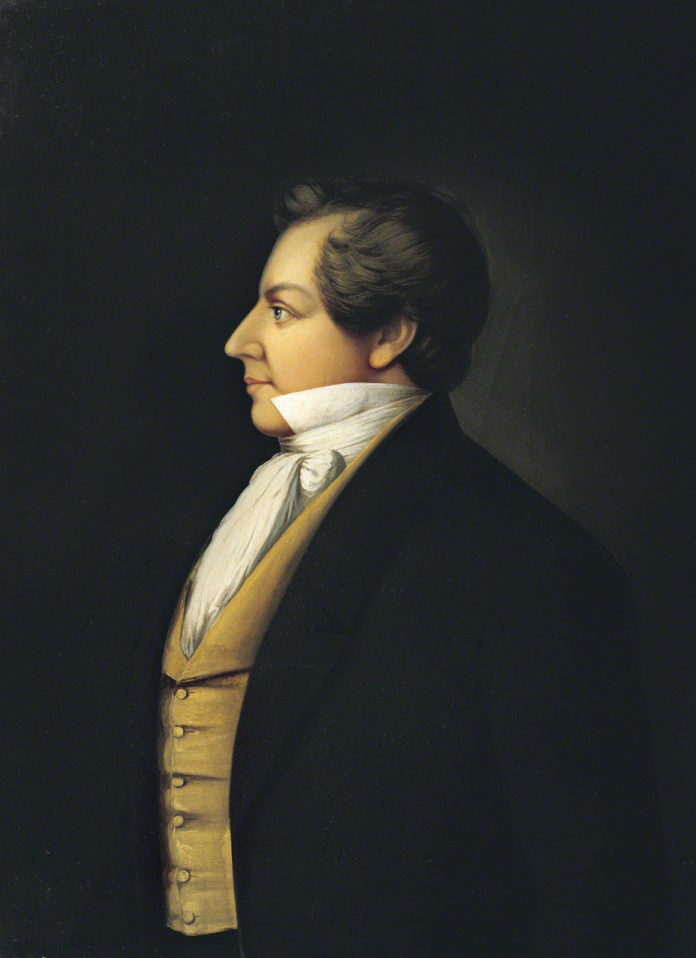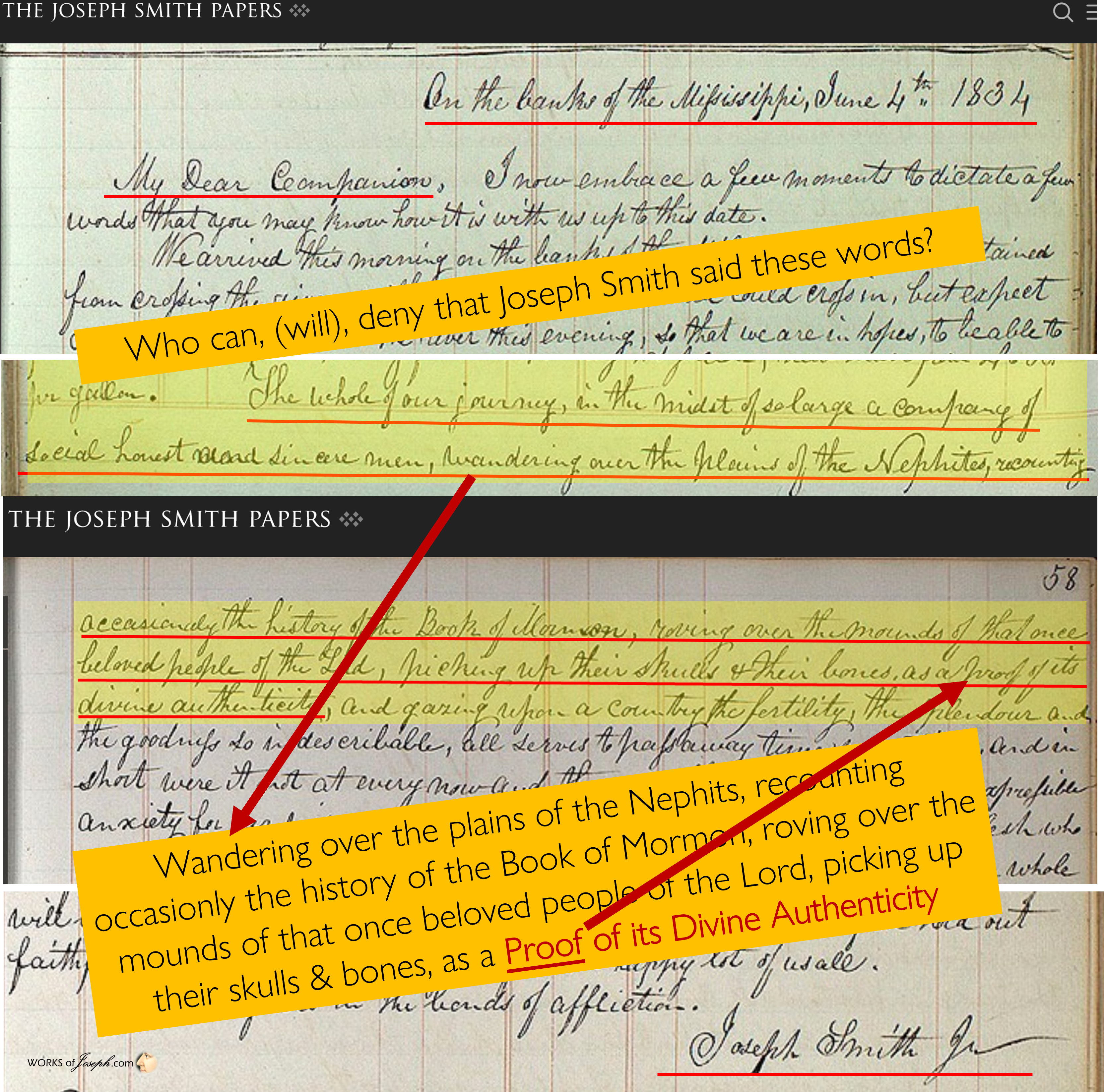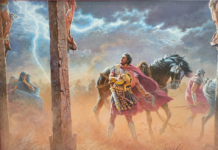What did the Prophet Joseph Smith know about Book of Mormon geography? By Rod Meldrum
 “No less than three times Joseph claimed to have received inspiration and/or revelation on the matter, and he is completely consistent about where he indicated he knew it occurred. He established this knowledge also by where he sent the first missionaries after having received commandment from God to go and preach the gospel unto the ‘Lamanites’. Where did Joseph send the first missionaries, and which tribes did he himself preach the gospel to and declare to be remnants of the Lamanites?
“No less than three times Joseph claimed to have received inspiration and/or revelation on the matter, and he is completely consistent about where he indicated he knew it occurred. He established this knowledge also by where he sent the first missionaries after having received commandment from God to go and preach the gospel unto the ‘Lamanites’. Where did Joseph send the first missionaries, and which tribes did he himself preach the gospel to and declare to be remnants of the Lamanites?
What about claims that the Prophet Joseph Smith stated that Zarahemla was located in Guatemala? This claim has been perpetuated by several Mesoamerican theorists. An example is the following:
“Joseph Smith, as editor of the Times and Seasons, directed our attention to this fact in an editorial (Oct. 1, 1842). He stated that “the city of Zarahemla “stood upon this land where explorer John Lloyd Stephens brought the magnificent ancient Maya ruins to the world’s attention in his 1841 publications,” “Incidents of Travel in Central America, Chiapas, and Yucatan.” Ongoing researches today are confirming Joseph’s inspired insight.”
 The claim that Joseph Smith made these statements stems from two articles that appeared in the Times and Seasons of Sept. 15th and Oct. 1st, 1842, and have been falsely attributed to Joseph Smith. Joseph Smith did not write either article, he did not sign it (as he testified he would for anything he wrote in the Times and Seasons), he had already given editorial responsibility to the 12 by revelation, and he happened to be in hiding from the law at the time these two articles appeared. This ‘evidence’ for a Mesoamerican setting for the Book of Mormon would be thrown out of any court of law for insufficient evidence.
The claim that Joseph Smith made these statements stems from two articles that appeared in the Times and Seasons of Sept. 15th and Oct. 1st, 1842, and have been falsely attributed to Joseph Smith. Joseph Smith did not write either article, he did not sign it (as he testified he would for anything he wrote in the Times and Seasons), he had already given editorial responsibility to the 12 by revelation, and he happened to be in hiding from the law at the time these two articles appeared. This ‘evidence’ for a Mesoamerican setting for the Book of Mormon would be thrown out of any court of law for insufficient evidence.
FARMS agree’s that claiming this quote to be from Joseph Smith’s is invalid.
See http://farms.byu.edu/display.php?table=jbms&id=202 quoted below.
Joseph Smith and Book of Mormon GeographyExactly what Joseph Smith believed at different times in his life concerning Book of Mormon geography in general is also indeterminable. Only a few clues remain. For example, while the church was headquartered in Nauvoo, Joseph read a best-selling book of his day by John L. Stephens, Incidents of Travel in Central America, Chiapas, and Yucatan, which John Bernhisel had sent to him from the East. In a letter dated 16 November 1841, the Prophet thanked Bernhisel and wrote about the book that “of all histories that had been written pertaining to the antiquities of this country it is the most correct” and it “supports the testimony of the Book of Mormon.” Ten months later, the Times and Seasons printed an enthusiastic review of the Stephens volume. John Taylor was the editor, although Joseph Smith had shortly before announced his own editorial responsibility for the newspaper. The unnamed writer of the review (probably Wilford Woodruff) stated that “we have just learned . . . [that] the city Zarahemla . . . stood upon this land [of Guatemala, whose ruins Stephens was reporting].
Joseph Smith received a revelation on January 28th, 1842 that the Twelve should be given responsibility for the Times and Seasons and manage the print shop. Joseph recorded, “I received the following revelation to the Twelve concerning the Times and Seasons, given January 28th, 1842. Revelation. Verily thus saith the Lord unto you, my servant Joseph, go and say unto the Twelve, that it is my will to have them take in hand the editorial department of the Times and Seasons, …” 1
 From the Times and Seasons, Tuesday, March 15th, 1842 Joseph wrote: “This paper commences my editorial career, I alone stand for it, and shall do for all papers having my signature henceforward.” Neither of these two editorial commentaries in the Times and Seasons indicating a Mesoamerican setting for the Book of Mormon was signed by anybody, including Joseph. He did, however, sign other articles that appeared during this same time frame, thereby validating his express statement that he would be responsible for all articles that bore his signature
From the Times and Seasons, Tuesday, March 15th, 1842 Joseph wrote: “This paper commences my editorial career, I alone stand for it, and shall do for all papers having my signature henceforward.” Neither of these two editorial commentaries in the Times and Seasons indicating a Mesoamerican setting for the Book of Mormon was signed by anybody, including Joseph. He did, however, sign other articles that appeared during this same time frame, thereby validating his express statement that he would be responsible for all articles that bore his signature
The proposed letter from Joseph Smith to John Bernhisel of Nov. 16th, 1841 is also being misconstrued to indicate something it doesn’t when reading in its entirety. It states:
“Dear Sir, I received your kind present by the hand of Er [Elder] Woodruff & feel myself under many obligations for this mark of your esteem & friendship which to me is the more interesting as it unfolds & developes (sic) many things that are of great importance to this generation & corresponds with & supports the testimony of the Book of Mormon;I have read the volumes with the greatest of interest & pleasure & must say that of all the histories that have been written pertaining to the antiquities of this country it is the most correct luminous & comprehensive.”
 When read in context, Joseph appears to be thanking Bishop Bernhisel for his friendship and support and then mentions that he had read the book set ‘Incidents of travel in Central America’ which he considered to be the most correct and comprehensive of any book written pertaining to ‘this country’. What ‘country’ was Joseph talking about? The book’s title specifically indicates it was written about Central America, so it is clear that Joseph was simply stating that this book set is the best information available on Central America. Nowhere does Joseph state that the Book of Mormon history occurred in Central America.
When read in context, Joseph appears to be thanking Bishop Bernhisel for his friendship and support and then mentions that he had read the book set ‘Incidents of travel in Central America’ which he considered to be the most correct and comprehensive of any book written pertaining to ‘this country’. What ‘country’ was Joseph talking about? The book’s title specifically indicates it was written about Central America, so it is clear that Joseph was simply stating that this book set is the best information available on Central America. Nowhere does Joseph state that the Book of Mormon history occurred in Central America.

Conversely, Joseph was very clear about where he KNEW the Book of Mormon to have occurred.
- In the Wentworth letter (which Joseph stated was received by revelation) Joseph wrote “I was also informed concerning the aboriginal inhabitants of this country, and shown who they were, and from whence they came; a brief sketch of their origin, progress, civilization, laws, governments,…“. He went on to write “The remnant are the Indians that now inhabit this country. This book also tells us that our Saviour [Savior] made his appearance upon this continent…”. 2
- In a letter Joseph wrote by commandment from God, and which was subsequently printed in the American Revivalist and Rochester Observer Feb. 2nd, 1833 edition, he writes to the editor in which he described the Book of Mormon as follows: “The Book of Mormon is a record of the forefathers of our western tribes of Indians;…” “By it we learn that our western tribes of Indians, are descendants from that Joseph that was sold into Egypt, and that the land of America is a promised land unto them.” West to Joseph at this time would have meant Ohio, Illinois, Missouri…further west it was actually Mexico at the time.
- From a hand-written letter to his wife Emma Smith while on Zion’s camp march of June 4th, 1834 Joseph wrote “The whole of our journey, in the midst of so large a company of social honest and sincere men, wandering over the plains of the Nephites, recounting occasionally the history of the Book of Mormon, roving over the mounds of that once beloved people of the Lord, picking up their skulls and bones, as proof of its divine authenticity..” Signed by Joseph Smith Jr. 3
- The Zelph account. On June 3rd, 1834, Joseph Smith Jr. with several brethren (8 of whom wrote in their personal journals as having witnessed this account, and three of these men became future prophets of the church) visited a prominent mound on top of the bluffs overlooking the area around Valley City, Illinois. Joseph procured a shovel and dug down about a foot where he unearthed some bones. He continued until a ribcage could be distinguished wherein they found an arrowhead. They’re combined, highly corroborated accounts were recorded as follows. “the visions of the past being opened to my understanding by the Spirit of the Almighty, I discovered that the person whose skeleton was before us was a white Lamanite, a large, thick-set man, and a man of God. His name was Zelph. He was a warrior and chieftain under the great prophet Onandugus, who was known from the hill Cumorah or eastern sea to the Rocky Mountains… He was killed in battle by the arrow found among his ribs during the last great struggle with the Lamanites and Nephites.” 4
- Even more importantly than what Joseph said is what he personally wrote. But even more important than what he wrote is what he DID. When commanded by God to send missionaries to preach the gospel “unto the Lamanites” (see D&C 28:8 Sept. 1830) Joseph immediately dispatched three men. Oliver Cowdrey (D&C 28:8), Peter Whitmer Jr. (D&C 30:5-6) and Parley P. Pratt (D&C 32:1-2). Parley P. Pratt recorded in his autobiography 5, “Thus ended our first Indian Mission, in which we had preached the Gospel in its fullness and distributed the record of their forefathers among three tribes…” And where did the prophet Joseph send those missionaries? To Buffalo New York, Ohio, and west of Missouri. And isn’t it ironic that he just happened to send these first missionaries to the very tribes that today have Haplogroup X (European) DNA…how did Joseph know that? How many missionaries did Joseph Smith send to Guatemala?
- Where did Joseph Smith himself go to “preach unto the Lamanites”? From History of the Church, Vol. 4 p 401-402 on Thursday, August 12th, 1841 Joseph wrote: “I accordingly went down, and met Keokuk, Kis-ku-kosh, Appenoose, and about one hundred chiefs and braves of those tribes (Sac and Fox tribes), with their families.” He went on to say, “I conducted them to the meeting grounds in the grove, and instructed them in many things which the Lord had revealed unto me concerning their fathers, and the promises that were made concerning them in the Book of Mormon.”
- D&C 54:8states “And thus you [Newel Knight] shall take your journey into the regions westward, unto the land of Missouri, unto the borders of the Lamanites.” Even if Joseph was confused (which he wasn’t) do you think that GOD is confused about where the remnants of the Lamanites are located?
- And finally, where did GOD himself place the city of Zarahemla? See D&C 125:3 and see for yourself where he placed it. Remember, God has only named a handful of places through his prophets, so it is likely very important when he does so. You may be very surprised at the answer, and it was not in Mesoamerica.” By Rod Meldrum
View a You Tube presentation Here.
Notes:
- History of the Church, Vol. 4:50 ↩
- Autobiographical and Historical Writings, vol. 1 of The Papers of Joseph Smith, by Dean C. Jessee p 431 ↩
- The Personal Writings of Joseph Smith, by Dean C. Jessee p 324 ↩
- History of the Church Vol. 2:79-80, 1948 edition ↩
- Pratt, Parley P. Autobiography of Parley Parker Pratt: One of the Twelve Apostles of the Church of Jesus Christ of Latter-Day Saints, Embracing His Life, Ministry and Travels, with Extracts, in Prose and Verse, from His Miscellaneous Writings. Salt Lake City, UT: Deseret Book, 1980. 56-61. Print. ↩
Joseph Smith knew all about where the Nephites lived.
“As we look into the record, we find that after the first visit to the Hill Cumorah, Joseph told the story of the history of the early American inhabitants to his family. His mother wrote: “From this time forth, Joseph continued to receive instructions from the Lord, and we continued to get the children together every evening for the purpose of listening while he gave us a relation of the same. I presume our family presented an aspect as singular as any that ever lived upon the face of the earth—all seated in a circle, father, mother, sons and daughters, and giving the most profound attention to a boy, eighteen years of age.” This sounds like the first family home evening of this dispensation.
Then she continued to say: “We were now confirmed in the opinion that God was about to bring to light something upon which we could stay our minds, or that would give us a more perfect knowledge of the plan of salvation and the redemption of the human family. This caused us greatly to rejoice, the sweetest union and happiness pervaded our house, and tranquility reigned in our midst. During our evening conversations, Joseph would occasionally give us some of the most amusing recitals that could be imagined. He would describe the ancient inhabitants of this continent, their dress, mode of traveling, and the animals upon which they rode; their cities, their buildings, with every particular; their mode of warfare; and also their religious worship. This he would do with as much ease, seemingly, as if he had spent his whole life among them.” This was before he received the plates. He must have received this by revelation, for he knew the whole story of the content of the record that is now the Book of Mormon. He had had five long visits with Moroni, and his mother says he received many revelations.” Eldred G. Smith, Conference Report, October 1967, pp. 82-84





